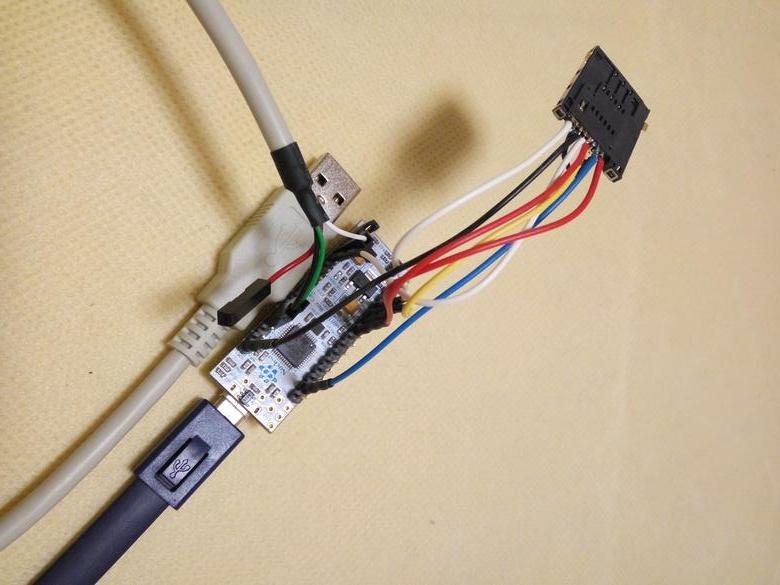Now, initial TTXS is working well.
I'm porting TTXS to the board named Nucleo-32 L432, which is smaller. There used to be a single Nucleo board, which was STM32 Nucleo F103. It seemed that when the smaller one came, now, there are two different series, smaller Nucleo-32 and larger Nucleo-64, with various chips.
The structure is similar. It has a target chip, and ST-Link/V2-1 for flashing/debugging. It is all-in-one development board.
Nucleo-32 L432 has STM32L432 (instead of STM32F103 on Nucleo-64 F103). Its USART has capability to support inversed mode (polarity 0 as H and the serial order MSB to LSB).

Another Reference Hardware
Nucleo-32 L432 is another reference hardware for TTXS.
Just like Nucleo-64 F103, I don't use any driver IC for smartcard; STM32L432 is directly connected to a smartcard connector. This is OK for experiment, because most smartcards support +3V3 voltage these days.
This time, I even don't put a resistor, using internal pull-up resistor.
I intend to use this hardware with SIM card form factor. So, the connector is:
- Yamaichi Electronics: FMS006-2610-0
Circuit (just connections of wires)
Smartcard Pinout
Here is a top view of Yamaichi FMS006-2610-0 pinout:
/---------+---------\ 1: Vcc (C1)
| C1 | C5 | 2: GND (C5)
+-----\ | /-----+ 3: RST (C2)
| C2 +--+ + C6 | 4: Vpp (C6)
+------| |------+ 5: CLK (C3)
| C3 +--+--+ C7 | 6: I/O (C7)
+-----/ \-----+ 7: SW1
SIM card 8: SW2 card detect
Pin 7 is connected to Pin 2, so that card detection can be done with 0.
Use of Connector of Nucleo-32 L432
We use pins from CN3 and CN4 connector.
- PA0: card insertion detect (0 when detected)
- PA3: Vcc
- PA4: Vpp
- PA1: RST
- USART1_TX (PA9): I/O
- USART1_CK (PA8): CLK
- USB DM PA11: USB cable D-
- USB DP PA12: USB cable D+
- CN3 4 (GND): USB cable GND (No connection USB cable Vbus)
Power is sourced from ST-Link/V2-1's USB Vbus.
Firmware
I ported Chopstx to STM32L432, although FPU/DSP is not supported (yet).
 GNU wannabee and Happy Hacking
GNU wannabee and Happy Hacking